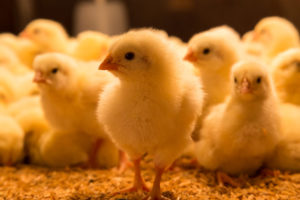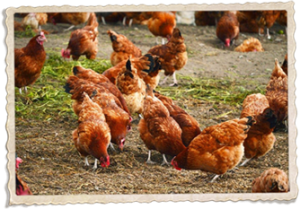Raising chicks from the moment they’re welcomed into the world can be an incredibly rewarding experience. It can be a lot of fun to see baby chicks hatch and mature into full-grown chickens.
During their first three to eight weeks of life, baby chicks need to go through a brooding period during which they’ll need supplemental heat to survive.
Whether you’re preparing to brood chicks for the first time or tackling it for the 100th time, there is always something new to learn about doing it. Let’s take a closer look at some helpful tips and tricks for making it through the brooding process unscathed.
Understanding the Brooding Period
Brooding can be a very challenging time for those entrusted to care for them because they aren’t yet ready to live out in the world on their own, even though they’re growing quickly. However, with the right steps, you can ensure your chicks come out of the brooding period happy and healthy.
During the brooding period, chicks are unable to regulate their body temperatures. As a result, they need to rely on you to provide it for them. They also need you to provide them with the right food, water, ventilation, bedding, and more.
Setting up the brooder
You should begin the brooding process long before your baby chicks hatch. You can get things started by deciding where you’re going to raise them and then setting up your brooder in advance. Your brooder is essentially the heated area where you will raise your chicks. It should be cleaned and disinfected before the chicks arrive. Your chicks should also be able to see where their feed and water are located from the brooder.
Most importantly, your brooder should be preheated prior to your chicks hatching so that you can place them directly into it once they enter the world. Ideally, you should start heating your brooder up about 12 to 24 hours before the chicks hatch and then monitor the temperature in it until they arrive.
What to Keep an Eye On
Light and Temperature
Mail order chicks need a temperature of 100 to 105 degrees under the heat source, at floor surface, for the first 48 hours. If you are hatching them at home, the temperature should be about 90 to 95 degrees so long as they are dried off from hatching. Either way, the chicks should have to have enough room to get away from the heat if they get too warm. You can tell your chicks are cold if they tend to congregate in clusters under the lamp.
Ventilation
Humidity is one of the side effects that come along with heating up a small space like a brooder. While a little bit of humidity could be good for your chicks, you need to find a balance. You can reduce the humidity by using ventilation to bring in cooler air to replace the heat and humidity.
Of course, you need to be careful when doing this. If you ventilate a brooder too much, it can make it too cold for your chicks. You can keep an eye on the humidity level by evaluating the bedding in your brooder. If the bedding is moist or wet, you you need to reduce the humidity by ventilating your brooder.
Bedding
Keep an eye on your bedding and make sure you change it regularly. If you let bedding hang around for too long, mold can grow, smells can permeate the space, and diseases can start to set in. The best bedding options for chicks are pine shavings, though rice hulls are another good choice. Dry straw is also OK for bedding.
Food, Water, and Other Health Needs
Picking the right feed
Once chicks start to grow, you will feed them either a layer or grower diet, depending upon what you plan on using them for later. At the very beginning of their lives, a starter feed is best. Starter feeds contain high levels of protein in them and are formulated to help both layers and growers get the nutrients they need to develop. Starter feed should be used for about the first eight weeks of a chick’s life before you decide which route to go with them next.
Provide and change water frequently
Chicks can easily get dehydrated or develop poor drinking habits if you don’t give them a steady supply of water. You can use a bucket, a bell drinker, or even a nipple system to administer water. No matter what you use, though, you should change the water on a regular basis. Otherwise, it can become contaminated by fecal matter, bedding, and more. You should also give your water system a scrub down weekly to cut down on mold and bacterial growth in it.
Mortality
No matter how hard you try to make brooding a successful process, mortality is, unfortunately, going to play a part in it from time to time. You should expect to lose about 1 to 2 percent of chicks while brooding is taking place. In some cases, it will be because of poor chick quality; in others, it will be because of starvation or dehydration. Try not to get too discouraged about it. Unless you’re suffering from particularly high mortality rates during brooding, it’s completely normal.
Want more information on successfully brooding chicks? Chickens for Backyards can provide you with all the chick care info you need. We can also supply you with baby chicks for sale. Call us at 888-412-6715 to get started.

